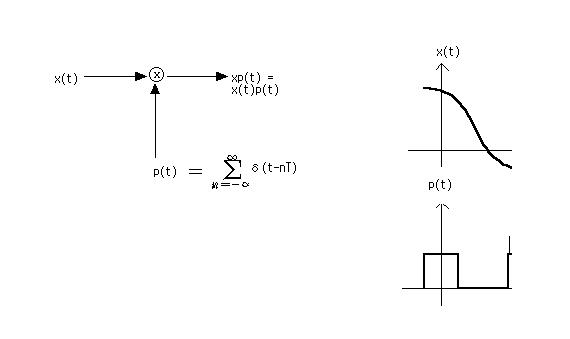(→Sampling Theorem) |
(→Sampling Theorem) |
||
| (4 intermediate revisions by the same user not shown) | |||
| Line 1: | Line 1: | ||
| + | === Sampling === | ||
| + | The word "sampling" is used in various fields but in this area(electrical engineering), we should get some sample signal at the poing during time interval and according to the signal data, we can make the sampling data. | ||
=== Sampling Theorem=== | === Sampling Theorem=== | ||
If the signal is sampled every T seconds, then x(t) can be reconstructed from these samples with no distortion. | If the signal is sampled every T seconds, then x(t) can be reconstructed from these samples with no distortion. | ||
| Line 8: | Line 10: | ||
<math>\omega_s = \frac{2\pi}{T} : sampling frequency</math> | <math>\omega_s = \frac{2\pi}{T} : sampling frequency</math> | ||
| − | <math>x_p(t) = x(t)p(t)</math> | + | <math>x_p(t) = x(t)p(t) </math> |
| + | |||
| + | [[Image:HAN99_ECE301Fall2008mboutin.JPG]] | ||
Latest revision as of 13:48, 9 November 2008
Sampling
The word "sampling" is used in various fields but in this area(electrical engineering), we should get some sample signal at the poing during time interval and according to the signal data, we can make the sampling data.
Sampling Theorem
If the signal is sampled every T seconds, then x(t) can be reconstructed from these samples with no distortion.
period T :sampling interval
p(t) : sampling function
$ \omega_s = \frac{2\pi}{T} : sampling frequency $
$ x_p(t) = x(t)p(t) $


